How to Dim Your LED Strip Lights? Quick And Easy Steps
Table of Contents
Dimming refers to altering a light source’s luminous output, often done for setting the mood or conserving energy when high luminosity isn’t necessary. Historically and even currently, most dimming systems were built for incandescent bulbs, using forward-phase and reverse-phase dimming techniques to reduce the power supply to the light driver. As a result, the driver’s output and, therefore, the light’s brightness are reduced with less power input.
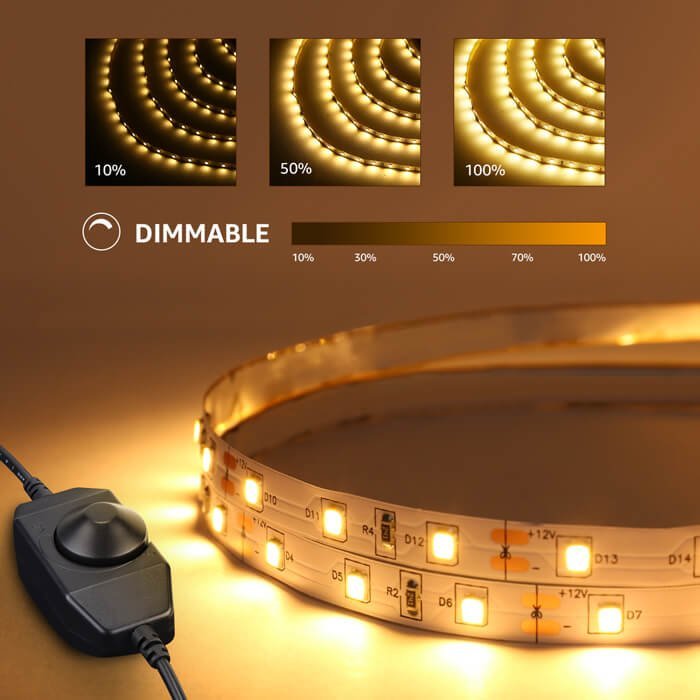
Regarding LED commercial lighting, common dimming keywords include DMX, DALI, 0/1-10V, TRIAC, WIFI, Bluetooth, RF, and Zigbee. These denote the dimming power supply’s input signals. The choice of input signals largely depends on factors such as the environment (installation, wiring), functionality, cost, and future expansion potential. The output dimming method of the power supply, rather than the input dimming method, primarily determines the dimming effect’s quality.
The output dimming techniques of a power supply are chiefly classified into Constant Current Reduction (CCR) and Pulse Width Modulation (PWM), often referred to as Analog Dimming.
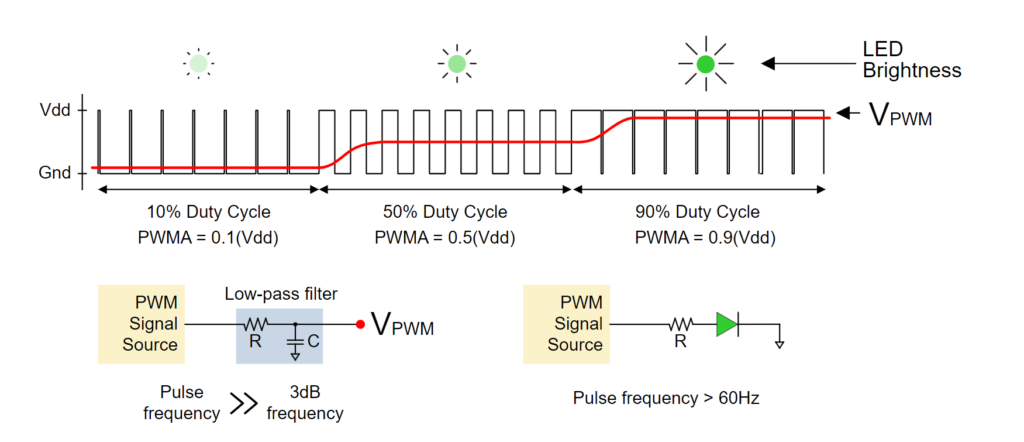
To clarify, all LED strips can be dimmed.
You might frequently notice the ‘NOT DIMMABLE’ label under the product description when shopping for everyday household LED lights like A-style bulbs. This is because some LED bulbs’ electrical circuits are not built to process the dimming signal of a wall dimmer designed for a conventional incandescent bulb.

However, LED strips aren’t meant to be directly connected to a high-voltage source, such as a 120V AC wall socket, and require a power supply for converting the high-voltage AC into a lower-voltage DC, like 12V or 24V.
As such, if a wall dimmer is used, it must communicate with the power supply before dimming occurs at the LED strip. Thus, the power supply unit determines the capacity to dim or not and its ability to understand the dimming signal from the wall dimmer.
However, virtually all LED strips are inherently dimmable. Provided with the correct DC electrical signal (commonly PWM), any LED strip’s luminosity can be modified.

Be aware that the market typically offers two kinds of LED strips: those with constant current and those with constant voltage. These types have different needs when it comes to dimming power supplies. For more detailed information, please consult the table provided below:
| LED Strip Type | Constant Current Reduction (CCR) | Pulse Width Modulation (PWM) |
| Constant Voltage LED Strip | Work | Work |
| Constant Current LED Strip | Fail | Work |
What governs LED brightness?

Forward Current (mA) vs. Forward Voltage (V) Graph of an LED
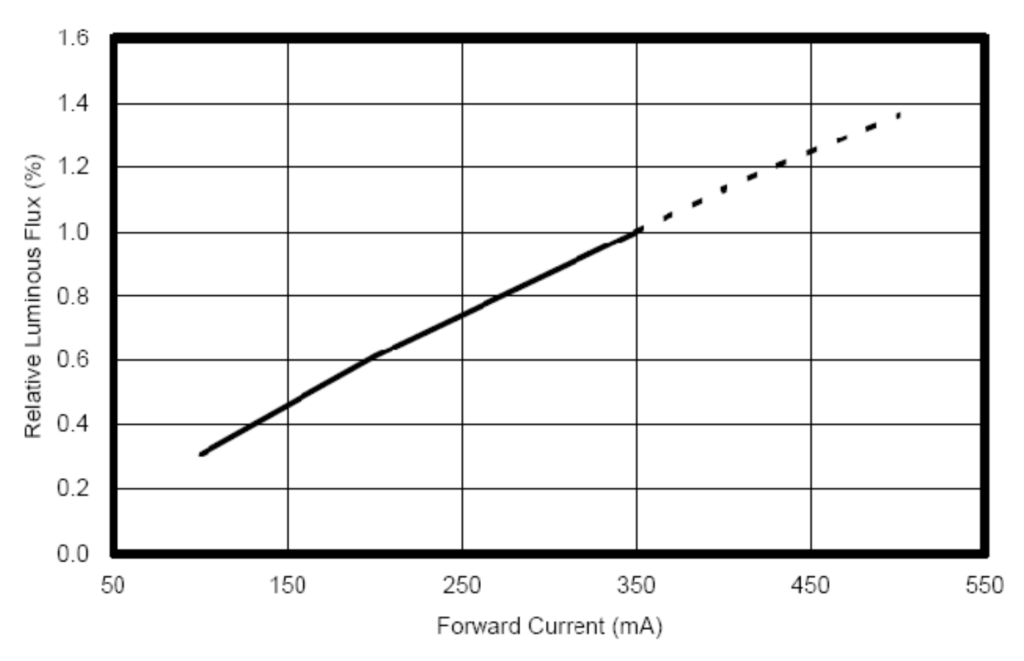
The current coursing determines LED light output through it. By examining the above graph, we can see a correlation between changes in voltage and current through the LED, leading us to the concept of dimming an LED by manipulating the voltage across it. However, the viable range for adjusting the voltage without causing excessive current is quite limited. Moreover, the current is not consistently predictable, similar to brightness.
By perusing various LED datasheets, we discover that an LED’s luminous intensity is contingent upon the forward current. This relationship is nearly linear. Therefore, we maintain the forward voltage at a constant value in dimming LEDs while managing the current.
Methods of Dimming LEDs
Dimming LED devices invariably require to employ a driver, and typically, two principal techniques to manage LED dimming are Pulse Width Modulation and Constant Current Reduction (also referred to as Analog Dimming).
Pulse Width Modulation (PWM)
PWM involves turning the LED ON and OFF at its regulated current rapidly. This rapid oscillation is perceptible to the human eye. The degree of brightness exhibited by the LED hinges on the duty cycle, which is the proportion of the duration in which the LED is ON compared to the entire duration of a single cycle.
Pros:
- Delivers an exact output level
- Ideal for applications demanding the LED to sustain specific attributes such as color, temperature, or efficiency
- Extensive dimming scope – can lower light output to less than 1 percent
- Prevents color deviations by running the LED at its suggested forward voltage/forward current operating position
Cons:
- Drivers are intricate and costly
- Since PWM employs rapid switching, each switching cycle’s fast rising and falling edges generate undesirable EMI radiations.
- The driver may encounter operational issues when connected with lengthy wires, as the stray features of the wire (capacitance and inductance) can disrupt the speedy edges of the PWM.
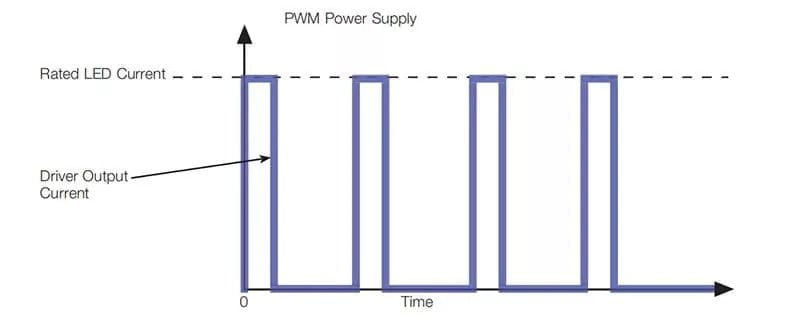
Duty Cycle
The duty cycle refers to the ratio of the ‘on’ duration to the regular interval or ‘period’ of time; a minimal duty cycle equates to low power, as the power remains off most of the time. The duty cycle is quantified in percent, with 100% indicating entirely on. If a digital signal is on for half the time and off for the other half, it exhibits a duty cycle of 50% and mimics a “square” wave. If a digital signal stays more on than off, it has a duty cycle of >50%. Conversely, if a digital signal spends more time off than on, it has a duty cycle of <50%. The following graphic depicts these three scenarios:
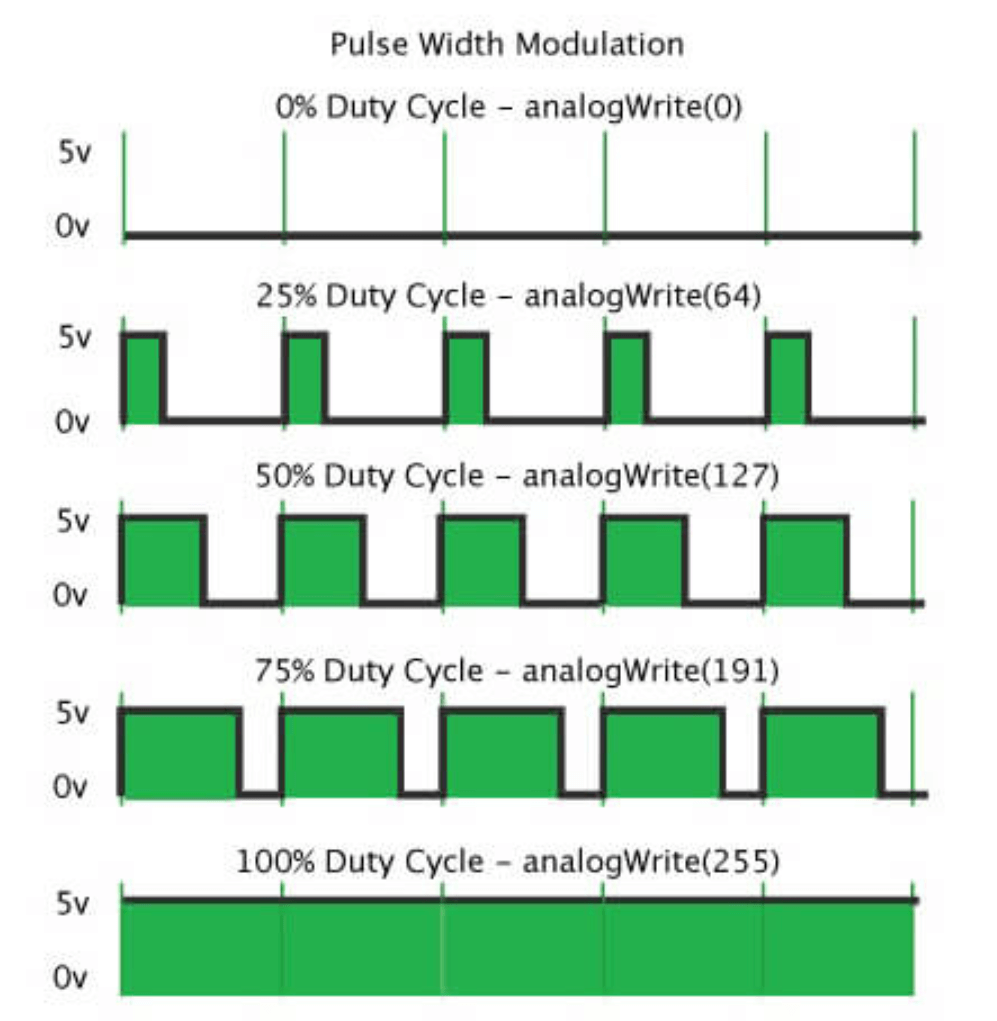
Frequency
Another critical characteristic of the pulse width modulation(PWM) signal is its frequency. The PWM frequency determines the speed at which the PWM signal completes a cycle, where the cycle is the time it takes for the signal to go on and off.
By balancing the duty cycle and frequency of the PWM signal, we can create a dimmable LED driver.
Continual Current Dimming (CCD)
In CCD, the current is continually transmitted through the LED, keeping it perpetually illuminated, unlike in Pulse-Width Modulation (PWM), where the LED is consistently cycled between on and off states. The luminosity of the LED can be adjusted by modulating the current level.
Advantages:
- CCD is suitable for applications with stringent EMI requirements and remote implementations involving extended wire runs
- Compared to drivers that use PWM (24.8 V), CCD drivers boast a higher output voltage limit (60 V) when classified as UL Class 2 drivers for dry and damp locations
Disadvantages:
- CCD is not recommended for scenarios needing light dimming below 10 percent, as LEDs exhibit poor performance and unpredictable light output at shallow currents
- Reduced drive currents can lead to color inconsistencies
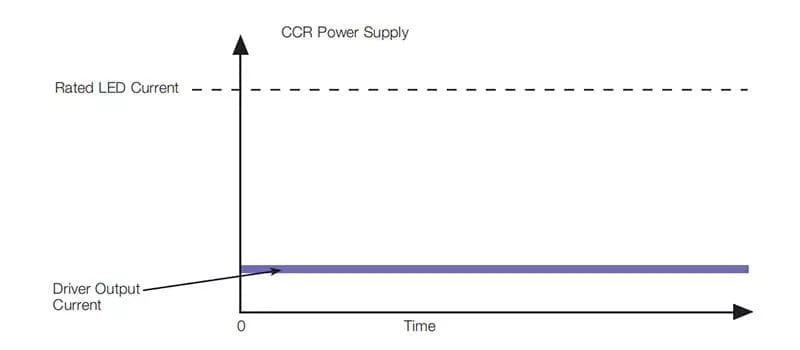
DMX512 Lighting Control
DMX512 is a universally accepted digital communication network protocol that regulates lighting and special effects. Originally, DMX512 was designed as a standard method for controlling stage lighting dimmers, which previously relied on incompatible proprietary protocols. It rapidly evolved into the leading method for connecting controllers, such as lighting consoles, to dimmers and special effects devices like fog machines and intelligent lights.
DMX512’s applications have broadened to non-theatrical interior and architectural lighting, from simple Christmas light strings to electronic billboards and stadium or arena concerts. Its versatility extends to controlling almost any device, indicating its widespread acceptance in various venues.

DALI Lighting Control
The Digitally Addressable Lighting Interface (DALI), which began in Europe and has been widely adopted in that region for many years, is also gaining popularity in the United States. DALI permits digital regulation of individual fixtures via a low-voltage communication protocol, which can both transmit information to and receive data from the light fixtures. This feature makes DALI a powerful tool for building information monitoring systems and control integration. DALI enables individual fixture addressing with a potential for 64 addresses, which can be arranged into 16 distinct control zones. DALI communication is not polarity-sensitive, allowing for a wide range of connection configurations with this protocol. A representative DALI wiring diagram is provided below:
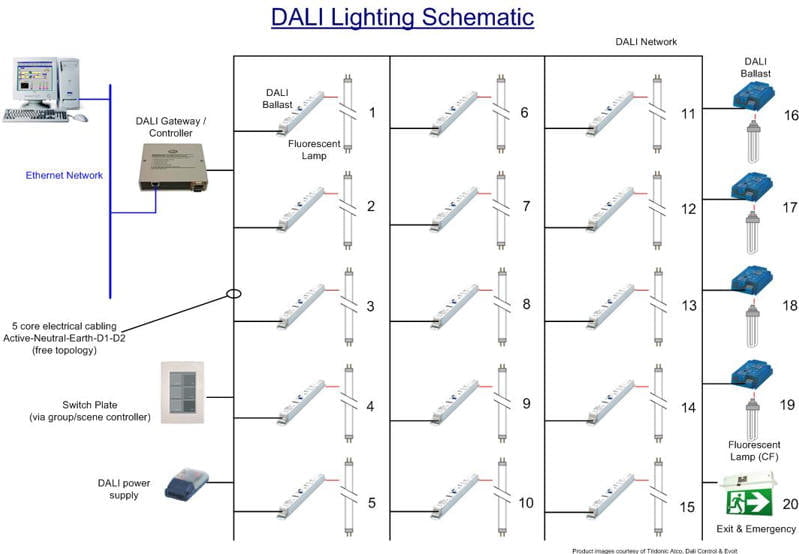
Dimming with TRIAC
TRIAC, an acronym for Triode for Alternating Current, functions as a switch to manage power. In the context of lighting, it is often referred to as ‘TRIAC dimming.’
The widespread use of TRIAC circuits in alternating current (AC) power management applications is well recognized. These circuits can switch high voltage and incredibly high currents during the two stages of an AC waveform, acting like a semiconductor device or a diode. TRIAC is a reliable option for light dimming in residential lighting setups and can also play a role in motor power control.
The proficiency of TRIAC in handling high voltage transitions makes it exceptionally suitable for various electrical control applications, making it a suitable choice for daily lighting control requirements. However, TRIAC circuits are not limited to domestic lighting alone. They are also employed in controlling small motors and fans and other AC switching and control applications. If a versatile control is what you need, you will undoubtedly find TRIAC to be a worthwhile system.
High voltage dimming (~230v) is a characteristic feature of TRIAC. You can achieve the desired dimming effect by connecting a TRIAC module to your main supply (ranging from 100-240v AC).

RF-Based Dimming
Utilizing radio frequency signals, RF dimming communicates with the LED controller to adjust the hue of your LED lights.
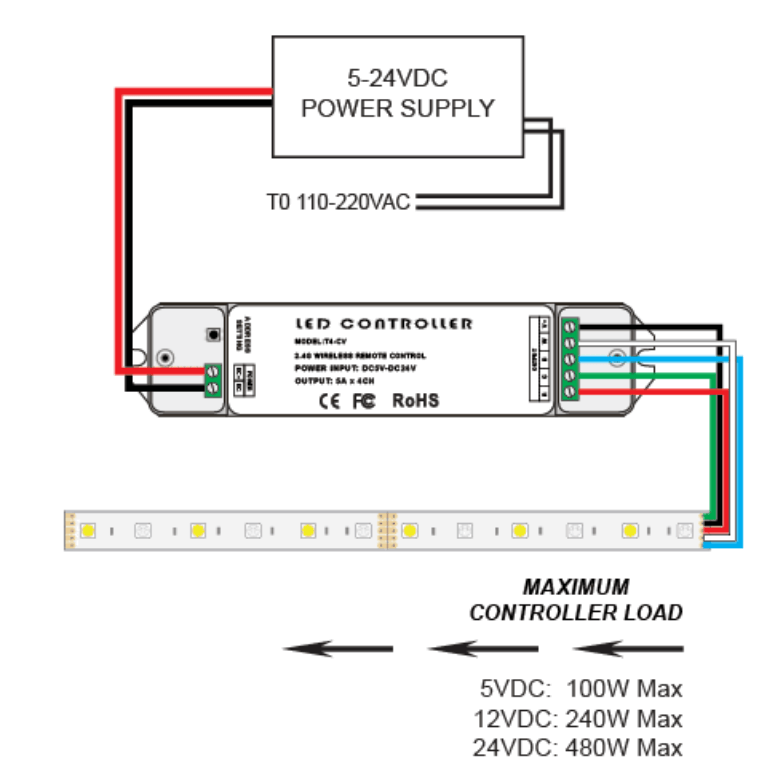
Dimming via Bluetooth, WIFI, and Zigbee
Bluetooth, a standard in short-range wireless technology, enables data exchange between stationary and mobile devices within a limited distance. Using UHF radio waves from 2.402 GHz to 2.48 GHz, Bluetooth creates personal area networks (PANs). It mainly substitutes wired connections for data transfer between nearby mobile devices and for syncing wireless headphones with cell phones and music players. Its most common mode restricts transmission power to 2.5 milliwatts, which results in a range limited to roughly 10 meters (33 ft).


Wi-Fi, a wireless network protocol family member based on the IEEE 802.11 standards, is commonly employed for device networking and Internet access within a local area. This facilitates data exchange between digital devices in proximity using radio waves. Wi-Fi networks are widespread and are often used in homes and small offices to interconnect digital devices. These include computers, smartphones, smart TVs, printers, and smart speakers with a wireless router for internet connectivity. Public access to Wi-Fi is often provided in locations such as cafes, hotels, libraries, and airports for mobile device users.
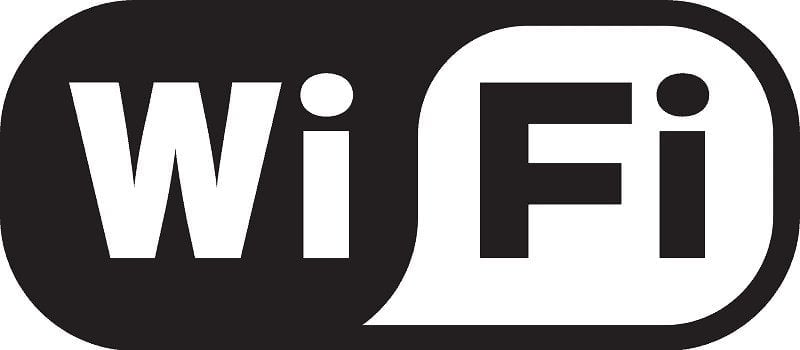
Zigbee, an IEEE 802.15.4-based specification, outlines a set of high-level communication protocols employed in creating personal area networks. These networks comprise small, low-power digital radios for applications such as home automation, medical device data collection, and other low-power, low-bandwidth needs. As such, Zigbee forms a low-power, low data rate, proximity wireless ad hoc network suitable for small-scale projects requiring wireless connectivity.

Conclusion
Every LED strip possesses dimmability. However, it’s important to note the existence of two kinds of LED strips: constant voltage and constant current. The constant current LED strip should be paired with a PWM output signal dimmable LED strip. A PWM or CCR output signal-dimming power supply should be project-dependent for constant voltage LED strips. Numerous input signals are available, including DMX512, DALI, 0/1-10V, TRIAC, WIFI, Bluetooth, RF, and Zigbee. The ideal input signal can be chosen based on factors such as the installation environment, intended functionality, cost, and scope for future expansion.
MyLikeLed, as a manufacturer, guarantees the high quality of its LED strips and LED neon flex, all of which are thoroughly tested in our advanced laboratories. Additionally, we offer customization options for our LED strips and neon flex. Therefore, for top-tier LED strips and LED neon flex, don’t hesitate to contact MyLikeLed!
FAQs
Not all LED strip lights are dimmable. You need to check the product description to see if your strip is compatible with dimming. Most 12V or 24V DC LED strips are dimmable when paired with the right dimmer and power supply.
There are several types of dimmers for LED strips, including PWM dimmers, remote-controlled dimmers, wall-mounted dimmers, and smart dimmers (Wi-Fi or Bluetooth). Make sure the dimmer matches your strip’s voltage and type.
Yes, if you’re using a wall dimmer, you’ll need a dimmable power supply. For remote or inline dimmers, a standard constant voltage power supply usually works. Always match the power supply to your strip’s voltage and wattage needs.
No, a regular wall switch can only turn the lights on or off—it can’t control brightness. To dim the lights, you’ll need a compatible LED dimmer switch or a dimmer controller.
Dimming LED strip lights can actually extend their lifespan. Running LEDs at lower brightness reduces heat and power consumption, which helps preserve the LEDs over time.

Hi, I’m Xylia Xiong, a sales professional with 14 years of experience in the LED strip light industry. I specialize in providing tailored solutions, leveraging my expertise in LED products and the latest industry trends. Known for effective communication and problem-solving, I’m dedicated to helping lighting manufacturers, importers, and distributors achieve their goals.
Let’s work together to create customized solutions that exceed expectations.
Related Posts

The Best LED Strip Lights You Can Buy Right Now

Comparing WS2811 Vs WS2812B: Key Differences


